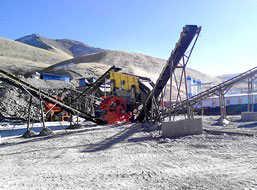Iron ore and iron sand are both sources of iron, but they differ in their composition, formation, and extraction methods. Here’s a breakdown of their key differences:
.jpg) 1. Composition & Form
1. Composition & Form
– Iron Ore:
– Primarily consists of iron oxides (such as hematite \(Fe₂O₃\) or magnetite \(Fe₃O₄\)) mixed with other minerals like silica, alumina, and phosphorus.
– Found in rock formations (massive deposits) and requires mining (open-pit or underground).
– Typically has a higher iron content (50–70% Fe) after processing.
– Iron Sand:
– Composed of fine-grained magnetite (Fe₃O₄) or hematite, mixed with sand and other coastal minerals.
– Forms naturally through the erosion of iron-rich rocks and is deposited on beaches or riverbeds by wave action.
– Contains lower iron content (10–30% Fe) compared to high-grade ores.
2. Extraction & Processing
– Iron Ore:
– Mined from large deposits, crushed, and processed through smelting in blast furnaces to produce pig iron.
– Requires beneficiation (removal of impurities) before use in steelmaking.
– Iron Sand:
– Extracted via dredging or magnetic separation from coastal/river sediments.
– Often processed using direct reduction methods due to its fine grain size (e.g., rotary kilns).
3. Uses & Applications
– Iron Ore:
– Primary raw material for steel production (used in construction, automotive, machinery).
– Iron Sand:
– Used in niche applications like cement additives, abrasives, and some steelmaking processes (e.g., in New Zealand and Japan).
– Histo ally used in traditional forging (e.g., Japanese *tamahagane* steel for swords).
ally used in traditional forging (e.g., Japanese *tamahagane* steel for swords).
4. Geographic Occurrence
– Major iron ore producers: Australia, Brazil, China.
– Iron sand deposits: Found in volcanic regions like New Zealand, Indonesia, Japan, and the Philippines.
Key Takeaway
Iron ore is a high-grade commercial resource mined for large-scale steel production, while iron sand is a lower-grade but accessible source often used where conventional ores are scarce.
Would you like details




